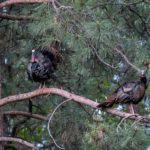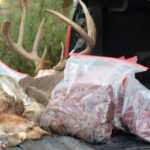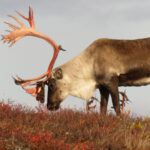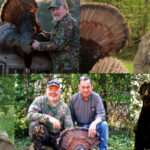As an out-of-state visitor who pays nearly 10 times more than a resident to bowhunt Colorado’s elk, you’d appreciate a little local gratitude for your $851.24 subsidy of the state’s wildlife-management program.
Still, you’d be pitifully naïve to expect it.
That’s why I wasn’t surprised to find no thank-you notes beneath my truck’s windshield in late September when returning to the trailhead near Steamboat Springs after a 15-day wilderness backpack trip. Lack of appreciation is nothing new. Some Western hunters will forever complain of nonresident “crowding” each autumn, even though all U.S. citizens share equal ownership of the West’s vast federal lands. This is hardly a modern perception. I recall arguing such issues with Colorado shipmates during Navy boot camp in 1975.
That’s also why I was more disappointed than shocked when my host and hunting buddy, Dave Burgess of Aurora, Colorado, noticed my truck looking askew after we finished our 5-mile pack-out. My F-250’s right rear tire was flat and its left rear tire was half-flat.
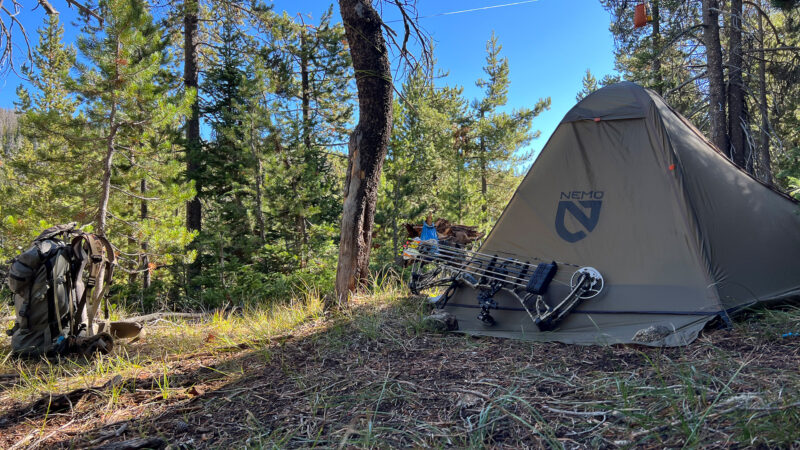
We doubted I had run over nails or sharp rocks when arriving two weeks earlier. My truck’s four tires were 5 days old and fully inflated when I parked Sept. 5, and they were still full a week later when we returned briefly to restock our food supplies for our second week in the backcountry.
Obviously, some weasel had noticed my Wisconsin license plates, and deflated the tires to penalize me for bowhunting “his” turf. Who would act so childish and cowardly? Probably the same mope who left an obscene sex toy on a nearby truck with Iowa plates.
This wasn’t my first such backwoods vandalism. Someone deflated my boat-trailer tires in central Montana while I bowhunted downriver for a week in 2009.
Or Was it Restraint?
Friends and family noted that things could have been worse in both cases: The vandals could have slashed my tires, not just deflated them. True, but I doubt their “restraint” was for my benefit. They simply realized that slashed tires would more likely trigger a criminal complaint and possible case file that could eventually bite them.
And so, Burgess and I spent the next hour reinflating my tires with his portable air compressor while accepting apologies from him and another resident hunter on behalf of the unknown jerk(s). (To be safe, I double-checked my tires the next morning before starting the 14-hour drive home. Both were still fully inflated.)
With that annoyance behind us, Burgess and I commiserated about our challenging bowhunts over a late farewell lunch. We had heard little bugling day or night the entire time, but combined to spot three or four lone bulls, and one eight-elk herd pushed by a 5-point bull. Burgess even got to feel like he was a predator a couple of times, but failed to get within bow range.
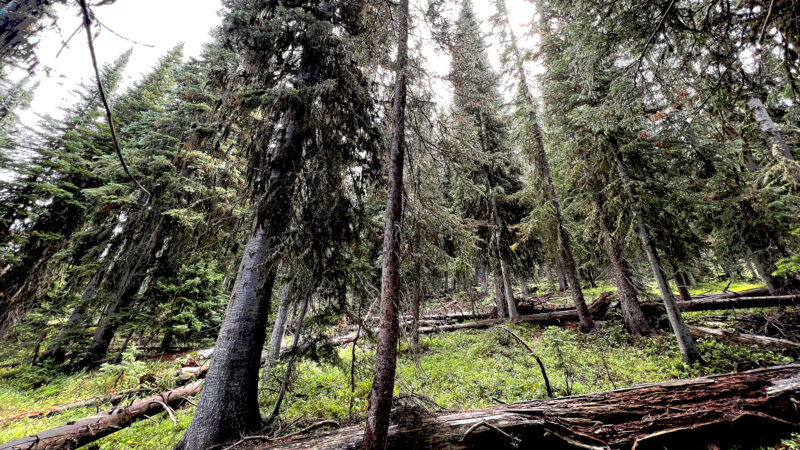
We couldn’t blame the weather for our failures, either. It rained only one day, and our “thermometer” —the drain tube on my water filter—froze every night except one. Each crisp dawn raised hopes of bugling while we ate breakfast and drank coffee in the dark.
“Anytime now,” we assured ourselves between frosty breaths. As further proof, aspen leaves grew increasingly yellow as we studied the ridgelines and mountainsides above our campsite. Yet the bulls refused to answer our calls or offer other encouragements.
Meanwhile, Burgess and I traded sporadic text messages when pushing above 9,800 feet and within range of cellular signals. “Heard a few bugles over here at 7:30 – 8 a.m.,” Burgess wrote one afternoon. “Sounded like a herd bull and two satellites. A hunter, ‘Doug Flutie’ as Jason Phelps calls them, was bugling occasionally from the top. I’m in a cool older-growth pocket, sitting above a recently mucked up wallow. The last bugle sounded 400 yards or so west of me.”
Calling in Hunters
Nothing more happened for Burgess that day, but other hunters fared better. Two days before ending our hunt, I learned from Jesse Brunk of Iowa that his nephew, Mason Owen, arrowed an impressive bull less than a half-mile away. I had spent most of that day hiding beside a ridgeline saddle where game trails connected two broad gullies. When bulls refuse all audio appeals, I stake out such sites to wait them out, hoping they’ll cruise silently into range.
Instead, Brunk bugled his way into my setup. I flagged him down before dusk one evening when he drew within 30 yards. As we compared notes, Brunk said he’s hunted that section of the Routt National Forest since 2012. He also said he wasn’t surprised I was from Wisconsin. “A lot of guys from the Midwest hunt here,” he said.
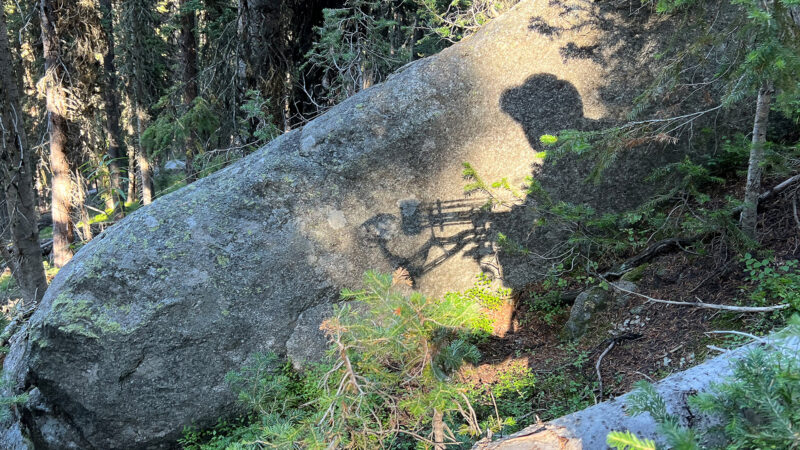
When I praised his bugling skills, Brunk laughed and modestly replied, “I call in lots of hunters.” He also apologized for stumbling into my lap but I assured him it was OK. “It’s public land,” I said, stating the obvious. “You have every right to be here.”
After Brunk and I separated, I hiked downhill 300 yards to two wet, sloping meadows. I had spent much of the past three days in a good hiding spot there, watching two well-trashed wallows within 30 yards, one to the southeast and one to the northwest. A bull or two had also thrashed nearby shrubs and raked two 6-inch-thick Douglas firs, raining shredded bark onto the grass below.
All that fresh sign went for naught, however. I watched and waited between the wallows till sunlight faded to shadows in the treetops, and then started my trek back to camp.
Conclusion
My family won’t eat elk this next year, but we’ve known such poverty more often than not the past 20 years, whether I’ve bowhunted Colorado, Idaho or Montana.
And yet I remain optimistic. The 2023 hunting season is still young, and many days of deer hunting remain here at home.
I also appreciate this: I’ve yet to have a fellow hunter deflate my tires while hunting Wisconsin’s woods the past 51 years.

 By
By 